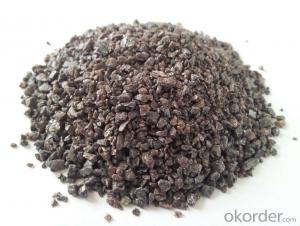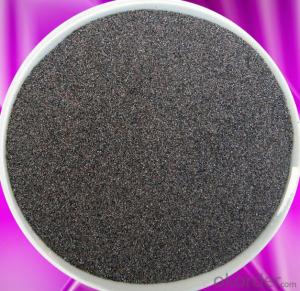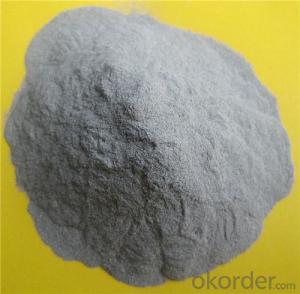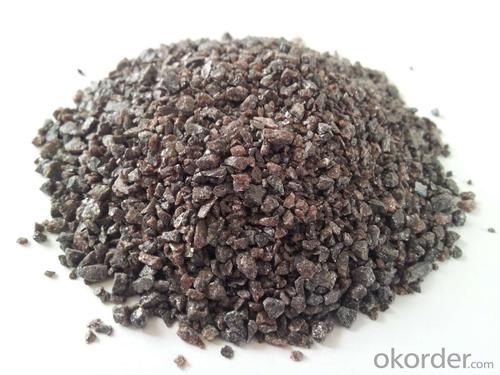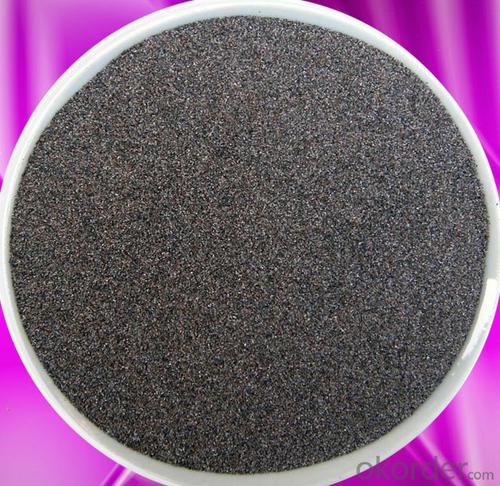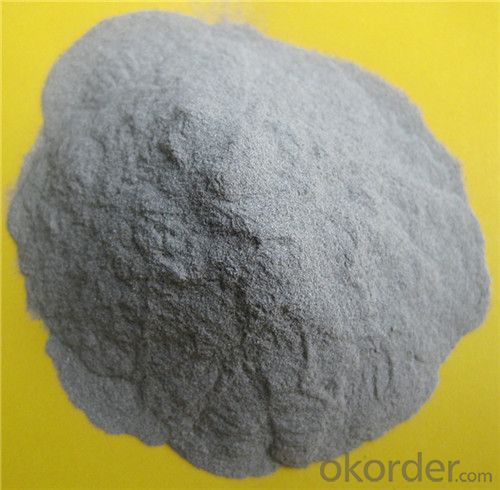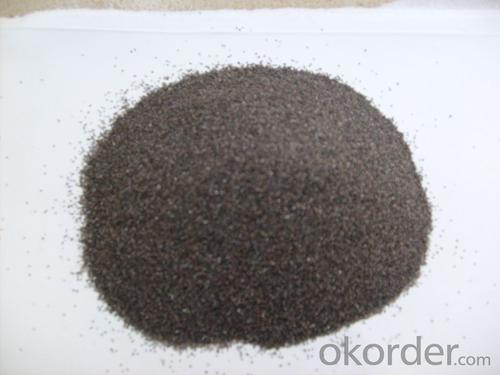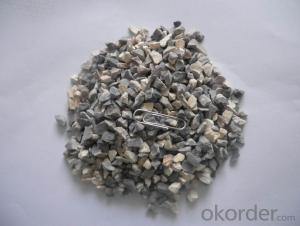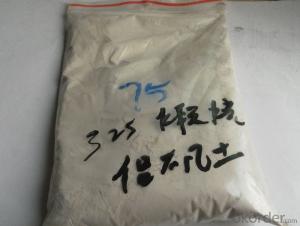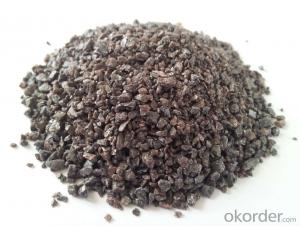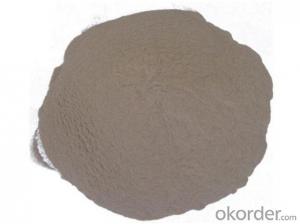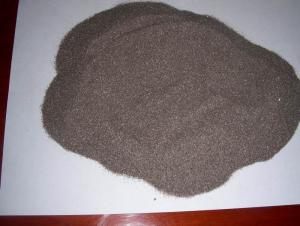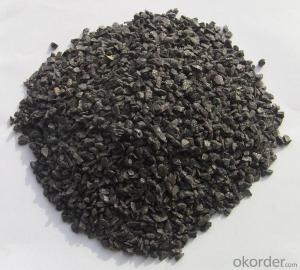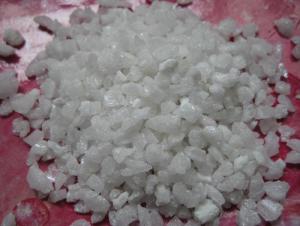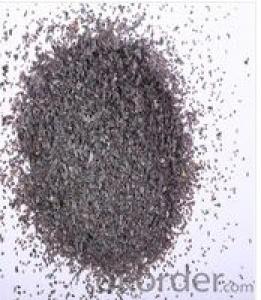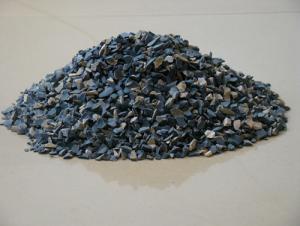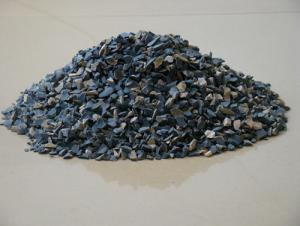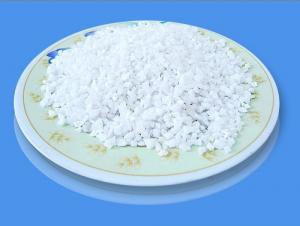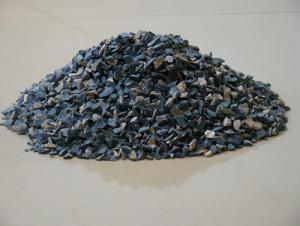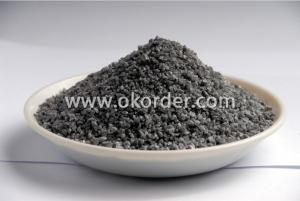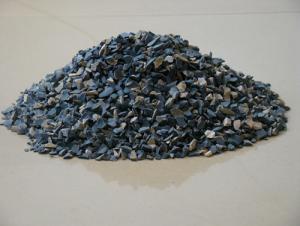Raw Materials for Refractory - Brown Fused Alumina for Refractory Use, Sandblasting, Abrasives
- Loading Port:
- Tianjin
- Payment Terms:
- TT OR LC
- Min Order Qty:
- 25 m.t.
- Supply Capability:
- 3000 m.t./month
OKorder Service Pledge
OKorder Financial Service
You Might Also Like
Brown Fused Alumina for Refractory Use, Sandblasting, Abrasives
Specifications
calcined Brown corundum
1) High Al2O3 Content: 95%min
2) Professional manufacture
3) Hot sale overseas
Calcined Brown corundum
1) High AL2O3 content: 95%min
2) Professional manufacturer
3) Prompt delivery
Description of Brown Fused Alumina for Refractory Use, Sandblasting, Abrasives:
Brown fused alumina is made from Calcined Bauxite. It is hard and tough material, used in manufacturing of grinding wheels (both vitrified and resin bonded) and coated products. These grains are also used for shot blasting and as polishing media. Refractory grade BFA is used as a raw material in the manufacture of high alumina refractory. It is available in grit sizes as per FEPA for abrasive applications and group grits for refractory applications.
Application of Brown Fused Alumina for Refractory Use, Sandblasting, Abrasives:
Resin ceramic abrasive, sand blasting, grinding and polishing, and is widely used in anti-wear runways, high-temperature coating matrix and metallurgy, chemical industry, and other high-level furnace refractories.
Pictures:
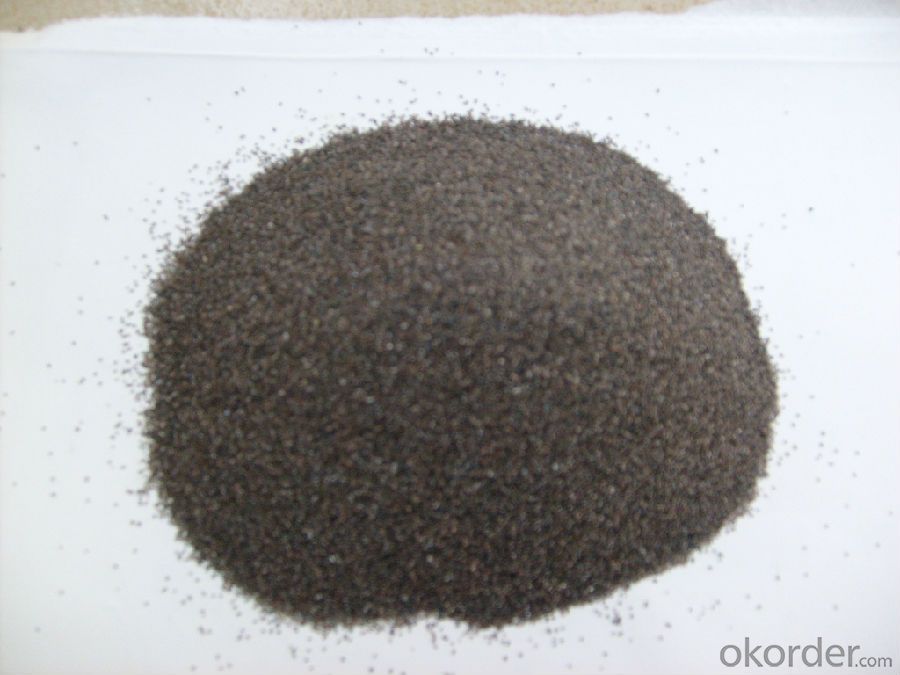
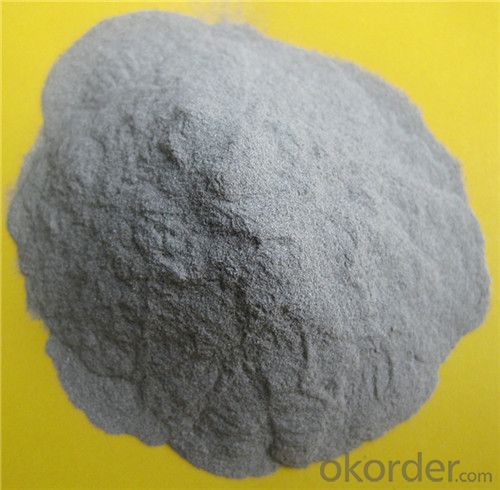

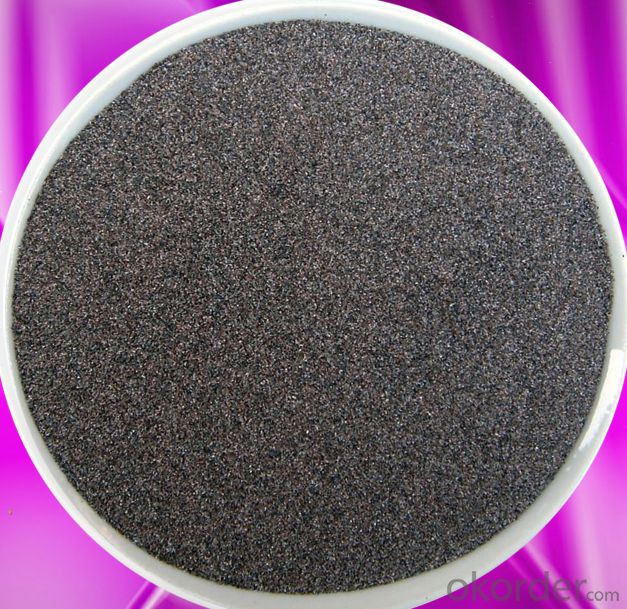
If you’ve any enquiries, please don’t hesitate to let us know.
- Q: what is the grading standards of external wall thermal insulation materials?
- external wall thermal insulation materials are divided according to Fire rating: 1, the combustion performance of insulation materials rates A. inorganic fiber spray coating, glass wool, foam glass, foamed ceramic , rock wool, foam cement, obturator perlite 2, the combustion performance of insulation materials rates B1: Extruded polystyrene board (XPS)after special treatment / polyurethane (PU) after special treatment, phenolic aldehyde, gelatine powder polyphenyl granule.3, combustion performance of insulation material rates B2. Molded polystyrene board (EPS), extruded polystyrene board (XPS), polyurethane (PU), polyethylene (PE), etc.
- Q: I wanna ask that magnesium oxide is refractory?
- Magnesium oxide. magnesium oxide has high refractory insulation properties. After above 1000 ℃ high temperature burning, it can be transformed into crystals. And it can be transformed into dead-burned magnesium oxide or sintered magnesia oxide until rising to above 1500 ℃. It has heat-resistant, non-conductive at room temperature and relatively poor thermal conductivity. Magnesium oxide is mainly used for the preparation of ceramic, enamel, refractory crucible and refractory bricks. I hope to help you
- Q: How can refractory material of the electric furnace be used for longer.
- Do not exceed the temperature, do not exceed the limits of use in order to achieve the best performance and the longest service life
- Q: What are the applications of refractory?
- Refractory materials are widely used in iron and steel smelting , glass, cement kilns, non-ferrous metal metallurgy, environmental protection, and chemical, etc. For example: For a car of 1.5 tons, do you you know how much refractory it use? The answer is: To produce top hat or other steel products, glass for vehicle windows, nonferrous metals kile aluminum and copper, plastic products of the body all needs refractory. A car of 1.5 tons needs to consume a total of 10Kg refractories.
- Q: What are the refractory materials above 1000℃
- I have no idea what field you are in, and I am skillful at making refractory materials, because this is my job. You can send me an email informing your purpose, here is my email address .
- Q: What are the specifications of fire resistant bag?
- Fire resistant bag is featured by wear resistance, resistance to heat, shock, acid and alkali, somke, fire, bacteria, mould and static electricity. Fire resistant bag is generally used for table top, desktop, wall face, cabinet, office furniture, wall-hung cupboard, etc. The common specifications include: 2135mm×915mm, 2440mm×915mm, 2440mm×1220mm, thickness 0.6-1.2mm. I hope it can help you.
- Q: How is refractory material made?
- It is made by mixing and processing of various refractories.
- Q: What are the types of steel refractory materials
- Large steel ladle usually made with magnesia carbon brick, of course, it contains a intermediate layer (such as good a little high alumina castable), heat insulation layer and heat preservative materials Alumina-magnesia castable is OK for small steel ladle
- Q: How many kilns using refractories are needed? What are the furnaces respectively?
- Rotary kiln, general alumina bricks, high alumina bricks, corundum - mullite brick and vertical kiln. I am limited. Please forgive me that I can only talk about what I know. There are tunnel kiln, clay brick, etc. which can be used in these kiln and shuttle kiln and so on. Shuttle kiln.
- Q: What is refractory?
- Refractory materials are widely used in metallurgy, machinery manufacturing, chemical industry, petroleum, power and other industrial fields. It is an inorganic nonmetallic material mostly used in metallurgical industry with the minimum refractoriness of 1580 ℃, able to resist high temperature without softening (annealing). It accounts for 50% to 60% in total output. Refractoriness refers to refractory's ability to resist fire.
Send your message to us
Raw Materials for Refractory - Brown Fused Alumina for Refractory Use, Sandblasting, Abrasives
- Loading Port:
- Tianjin
- Payment Terms:
- TT OR LC
- Min Order Qty:
- 25 m.t.
- Supply Capability:
- 3000 m.t./month
OKorder Service Pledge
OKorder Financial Service
Similar products
Hot products
Hot Searches
Related keywords
